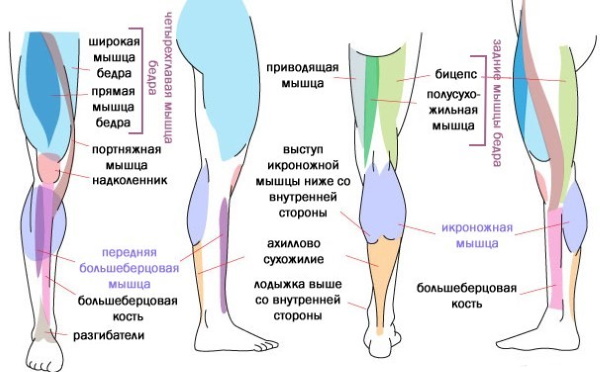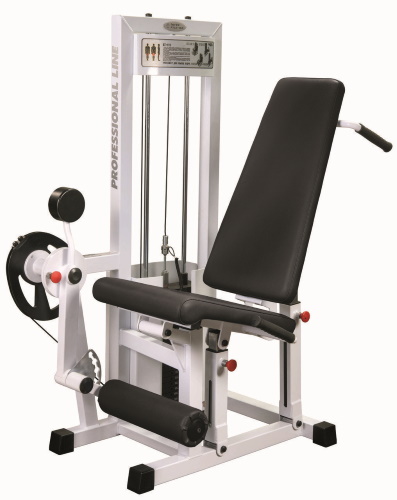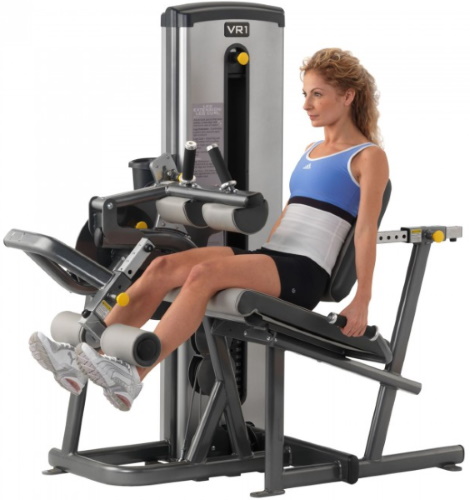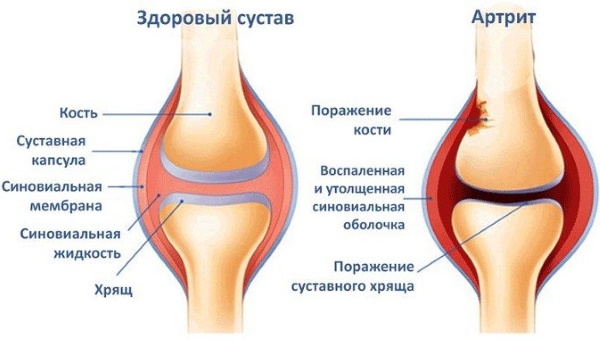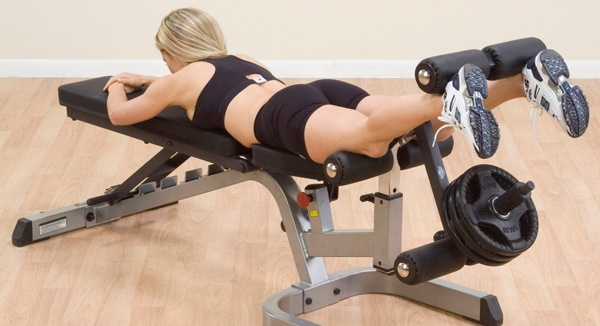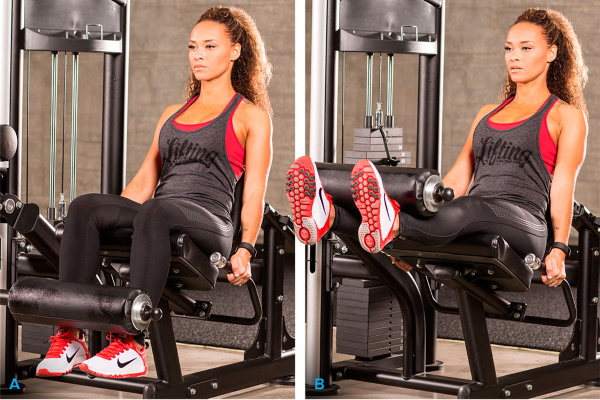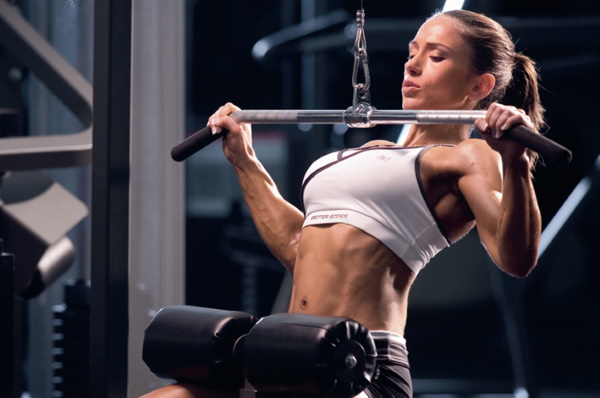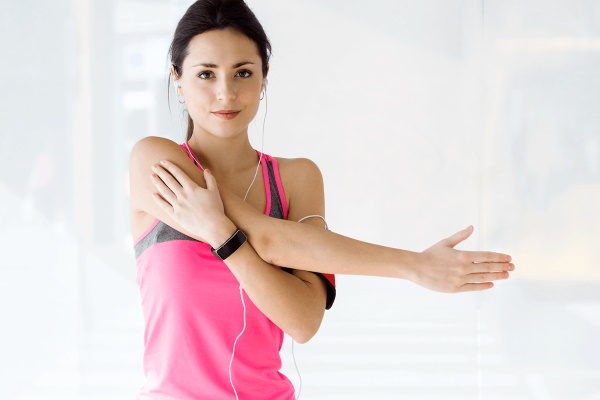Extension of the legs in the gym on a specialized simulator is an isolated exercise. That is, in the process of its implementation, a strictly defined muscle group is involved - quadriceps. The Seated Leg Extension Block Trainer adds symmetry and proportionality to the athlete's front thigh.
Essence and basic principles
The basic principles of any athletic exercise aimed at developing a group of muscle fibers come from the basic functions of the muscle, the attachment points and its size.
The quadriceps muscle is one of the largest muscles in the human body. It is located on the anterior surface of the femur. Each of the 4 heads of the group has its own origin. But in the lower part, they are all attached to a common large tendon. It covers the patella and joins the tibia.
The rectus femoris is the longest in this group. It originates from the anterior inferior spine of the supracostal groove. The medial muscle occupies a median position in the lower part. Attaches to the medial lip of the rough thigh line. In trained athletes, it looks like a drop hanging over the knee.
The wide lateral muscle occupies almost the entire outer surface of the upper limb. It originates from the greater trochanter of the intertrochanteric line and from the attachment point of the medial muscle. The vastus intermediate is located on the anterior surface of the leg between the medial and lateral heads.
It is the weakest muscle bundle in the group and is attached at the top point to the anterior surface of the thigh bone. From this it becomes clear that the main function of the quadriceps is to extend the lower leg in the knee joint. Since the rectus muscle enters the posterior plane of the limb at the attachment point, during contraction it helps to bring the thigh to the ilium (hip flexion).
Thus, the essence of leg extension in the simulator is reduced to straightening the limb in the knee joint. However, the human body has a number of features that limit the range of motion in this exercise. They also impose a number of restrictions on the technique of performance. The leg extension machine is a chair with an articulated roller at the base.
It is designed to transfer the load from the block mechanism to the target muscle group. More expensive equipment models are equipped with additional adjustments in the area of the backrest and lower inventory cushion. The support roller can be adjusted in height. This allows the athlete to get into the correct position before starting the workout.
Leg extension in a seated simulator should be carried out taking into account the features of the equipment and the rules of the technique for performing the movement:
- When landing in a simulator chair, it is necessary to monitor the position of the pelvis. The athlete's buttocks must be pressed firmly against the seat cushion. Excessive hanging of the hip during the exercise is not allowed. To avoid this, you should move the back of the chair so that the upper part of the limb lies completely on the surface of the pillow.At the same time, the lower leg should not touch the seat at the lowest point. Otherwise, the athlete will experience discomfort during the extension process.
- The support roller should be adjusted in such a way that at the top of the amplitude it is as close as possible to the ankle joint and even rests slightly on the foot. This will allow you to achieve maximum load at the time of peak contraction of the quadriceps.
- Before starting the movement, it is necessary to pull the socks of the feet towards you and maintain this position during each repetition.
When performing extensions in the simulator, you should avoid sudden movements. Jerking and throwing loads can injure an athlete. This can be an injury to the back, inner or front of the thigh. Despite the fact that straightening the leg to the quadriceps is classified as an isolated exercise, it is aimed at developing a strong muscle group.
Therefore, the weights used can reach 40-60 kg even for novice athletes. Given the high level of potential stress, the athlete must understand the dangers that arise in this regard. The risk of injury is most acute when the leg is bent too far at the knee.
This error is common for beginners and experienced gym goers. To reduce the risk when performing a negative phase of movement, it is recommended not to lower the load below 90 grams. from the plane of the seat cushion or do not allow the angle between the thigh and lower leg less than 90 degrees.
Indications for the beginning of use
Exercising the legs in a sports simulator from a sitting position is rarely used as an independent exercise. Pro athletes use it for extra quads or warm-ups before starting a heavy squat.
Also, preliminary heating of the muscles of the front of the thigh is used before starting work on the lagging muscles of this part of the body. Extension on the simulator is used for "drying". Due to the peculiarities of metabolism in men and women, the process of getting rid of excess fat occurs from top to bottom.
That is, the effect in the legs and hips is achieved last. It is possible to accelerate the achievement of results in these parts of the body by increasing the load during training. To do this, use the straightening of the legs on the quadriceps.
Contraindications for use
Seated leg extension is an unnatural movement. In the life of an ordinary person, there are no situations in which he would have to lift a weight comparable to his own with the effort of one quadriceps muscle of the thigh.
For 40 thousand years of history, the human body has not been able to develop sufficient defense mechanisms for this exercise. This means that the joint is not ready for such loads. He needs additional training.
Therefore, this set of exercises is not suitable:
- With arthritis. This digestive-destructive disease is associated with the destruction of the cartilage tissue of the joints. Therefore, in this case, the additional load on the affected part of the body can have a catalytic effect.
- Persons with spinal injuries. Seated exercises are recommended for people with limited physical activity due to spinal injuries. An exception is the sitting leg extension. This exercise forces the back muscles to engage intensively when lowering the load.
- People with knee pain. While performing the movement, slight discomfort can develop into serious injury.
Helpful hints
Seated leg extension can be more beneficial if you know some of the features:
- Changing the position of the toes of the feet will help shift the load. Turning inward allows you to transfer the main load to the lateral head of the quadriceps. Turning the foot outward loads the inner thigh to a greater extent.
- It makes sense to practice alternating extensions with each leg. This allows you to identify weak points and concentrate muscle training.
- At the top point of the amplitude, the maximum extension of the lower extremities should be achieved.
- Fixing the weights at the top of the trajectory will increase the load on the muscles and reduce the weight of the projectile. The lighter the weight, the lower the risk of injury.
- When working with medium and large weights, it is necessary to use the side handles of the simulator to fix it on the seat cushion and prevent the pelvis from separating from the chair.
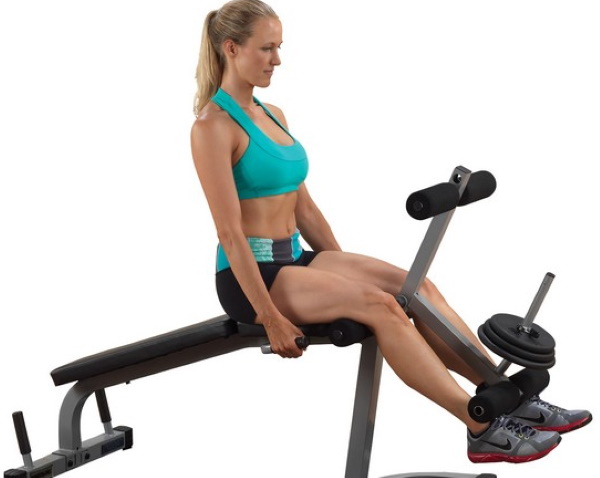
The seated leg extension machine can be either a modern model with a large number of additional adjustments and functions (for example, counting the number of repetitions performed), or the most common one without a chair back. The recommendations and technique for performing the exercise in both cases remains unchanged.
Main complex
Seated Leg Extension is an exercise aimed at developing the front of the thigh.
It should be included in the training program in conjunction with other similar types of movements:
- Lunges
- Squats are classic.
- Squats on one leg.
- Rows of various variations.
- Flexion on the simulator.
Complex for the development of strength
The complex provides for the use of extensions as an additional exercise after classic squats. The quadriceps leg extension is used to pump blood into the upper thigh and is performed second or third in leg workouts.
Part of the total split for training the lower extremities during the strength stage of an athlete's training may look like this:
| № | Exercise name | Description |
| 1 | Squats 12-10-8-6-4 repetitions. | They are performed in full amplitude in compliance with all the rules for the technique: the back is straight, the legs are shoulder-width apart, the heel does not move or come off the surface when lowering. |
| 2 | Seated Extension 3-4 * 12-15 repetitions. | The shoulder blades are brought together, the back is straight and tightly pressed against the back, the pelvis is pressed against the seat. The movements are smooth. |
| 3 | Lying leg curls 3-4 * 10-12 repetitions. | The exercise is performed on a special block simulator. It is a horizontal bench. The movement must be carried out without jerking. Raising the legs occurs until the support roller touches the gluteal muscles. |
During the last movement, remember the correct position of the roller relative to the lower leg of the practitioner. It should be in the area of the ankle joint. The taller position will interfere with reaching the peak contraction of the hamstring.
Before starting leg extension, you should take the starting position described in the second part of the article. The position of the support designed to transfer the force from the block structure to the quadriceps muscle of the thigh must strictly comply with the stated requirements. Do not forget about pulling your toes. This plays an important role in this complex.
When training laggards and stabilizer muscles
The complex provides for the principle of preliminary fatigue of strong quadriceps muscles, followed by the implementation of basic movements. This approach can tire your quads. As a result, the lagging and anatomically weaker muscles of the thigh are intensively involved in the work.
The preloading method is suitable for people who do not have a large load on the spine. If you do not want to give up squats, such an athlete can use this method. But it is not recommended to use it without the permission of a surgeon or physiotherapist.
| № | Name | Description |
| 1 | Seated Leg Extension 4-5 * 10-12 repetitions. | The technique of execution and the requirements for the placement of the student on the apparatus remain unchanged.When working in the simulator, it is worth remembering that this exercise is designed to slightly fatigue the quadriceps before a heavy basic movement. A load of 60-70% of the maximum is used. |
| 2 | Leg press or squats. 5 * 8-10 repetitions. Load - 70-80%. | The exercises should be performed in a special frame or on a leg press simulator. In this case, it is important to achieve a failure state in the target muscle group. |
To reduce the level of subcutaneous fat
In the leg straightening complex, they act as an additional load that can be applied with high intensity and short rest intervals. The split is designed so that its exercises involve the muscles of the whole body. At the same time, the rest between them should not exceed the time it takes to move between the inventory.
At the initial levels of training, it is impossible to make up such a complex completely from the basic multi-joint movements. The athlete's body will not be able to adequately respond to such training. This will lead to overwork. The risk of injury will increase. In this case, seated leg extensions are an alternative to presses or lunges.
The training program may look like this:
| № | Exercise | Manual |
| 1 | Squats 1 * 12-15 repetitions. | The load is selected in such a way that the athlete can easily perform 15-20 repetitions. Breathing should not be lost. Achieving muscle failure is prohibited. |
| 2 | Block pull to the chest 1*12-15. | The exercise is performed on a suitable simulator. Work on the equipment must be carried out smoothly and without jerking. When pulling the block, maintain a slight deflection in the lower back, do not slouch, take your elbows at the lowest point behind the line of the back, pull the bar to the top of the chest. |
| 3 | Bench press or dumbbells lying 1 * 10-12 repetitions. | Performed on a horizontal bench. The exercise technique must be followed. The shoulder blades are brought together. The head is pressed. The pelvis does not come off the supporting surface. The bar moves in one plane. The movement is uniform. |
| 4 | Seated Leg Extension 1 * 12-15 times. | Performed in accordance with the above recommendations. |
| 5 | Pull of the lower block to the belt 1 * 8-12 reps | A movement trainer can be found in most sports clubs. Exercise belongs to the multi-joint. The technique involves maintaining a straight back position, bringing the shoulder blades together when pulling the block and abducting the elbows of both hands into the plane of the back. |
| 6 | Reduction of hands on the simulator while sitting 1*12-15. | The exercise is aimed at working out the pectoral muscles and deltas. It is important to monitor your back position while driving. Rounding of the thoracic spine is not allowed. |
The complex is a series of sequentially performed tasks. All 6 sets form 1 circle. The number of circles is determined depending on the physical form and condition of the student. There is no rest break between exercises of one circle.
Fixing the result
In order for the exercise machine leg straightens to be beneficial, they must be performed in accordance with the described recommendations. Combining this isolated exercise with basic movements can help achieve goals related to improving overall fitness, weight loss, or strength development.
To reduce the risk of injury, prepare your muscles for a workout, and improve future performance, before each workout, you need to:
- Warm up. The best option is joint gymnastics. She is known to everyone from elementary school. Warm-up includes swinging and rotating movements of all joints of the body. It is important to follow the correct sequence. You need to start with the neck, then the shoulders, elbows and hands. The lumbar, knees and ankles complete the complex.
- Perform a warm-up pre-workout block of exercises. It includes squats with a body bar or barbell, overhead raises, and light jogging for 5-10 minutes.
Stretching is important after training. Particular attention is paid to the front of the thigh. To do this, find a stable support and fix the body with one hand.
Press the other ankle bent at the knee joint to the back of the leg and slowly pull it back. This should be done until a slight muscle tension is achieved. Stretching is performed alternately for each of the limbs.
When to expect the effect
Extension of the legs in the seated simulator, included in the training process and performed in accordance with the indicated recommendations, can bring results in 2-3 weeks, that is, after 2-3 full workouts. The effect of exercise is manifested in the form of a clearer outline of the medial femoral head and a clear separation between the other 3 groups of muscle fibers.
Straightening the legs at the knee joint on a sports simulator is a versatile tool to achieve your goals. Despite performing the exercise from a seated position, it does not provide a rigid fixation for the back muscles. But adherence to the technique of training and the correct selection of the load make it an indispensable tool in the arsenal of an athlete.
Leg Exercise Videos
Extension / flexion of the legs in the simulator, important notes:

